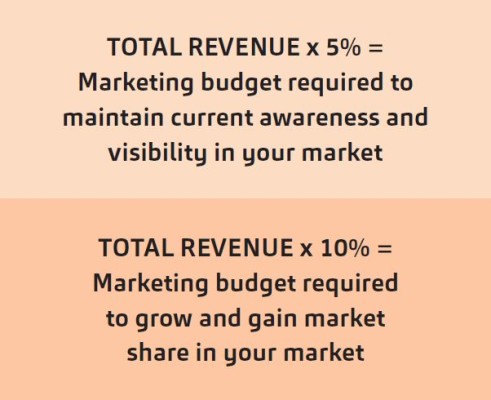Changing your business structure from sole trader to a company
Are you a sole trader or a contractor? As your business grows, you may find that you need to employ staff...
Successful business owners know that to generate new business they must do some form of promotional marketing, putting more customers/clients into the ‘marketing funnel’ towards becoming loyal customers/clients.
Time to read: 4 mins
Business owners often ask how much they ‘should’ or ‘have to’ spend to see a return on investment. What we often see is businesses spending too much, or too little, and often in all the wrong places. At some point, even the smartest business owners get swayed by a savvy sales pitch, feel obliged to help with a sponsorship, think every opportunity to advertise is a good one or don’t know how to say no.
The short answer is there’s no ‘one size fits all’ amount you should be investing. In saying that, there is a simple ‘rule of thumb’ calculation that can help:
These rules of thumb are based on businesses that average at least six figure revenue numbers. Businesses with smaller margins should assign a percentage of their net revenue based on estimates of what competitors are spending. (And yes, it will have to be your best guesstimate, as that data isn’t readily available. Chat to your accountant about what percentage is feasible for your business, based on your unique circumstances.)
NZ Marketing Association data shows the percentage of investment in marketing in this country ranges between 5 - 29% of total revenue which is a huge variation. Generally, B2Cs (Business to Consumer) invest more than B2Bs (Business to Business), and in recent years the trend to invest in ‘digital’ channels such as websites, social media, videos and blogs has dramatically increased.
The easiest way to determine how much you ‘should’ or ‘have to’ invest in marketing comes down to knowing what your business objectives are, who your customers/clients are and then identifying the right channels in which to reach them. By having a clear business plan and marketing strategy in place, it will help any business make good decisions on marketing investment, irrespective of their product or service offering.
A marketing budget should include all of the activities that may potentially bring a return on your investment not just advertising. Those channels may include (but are not limited to):

These activities when done correctly can lead to new business however, if done ad-hoc or without a clear goal in mind, you might as well buy a lotto ticket, cross your fingers andhope for the best.
Every business is different and will have different marketing needs to reach its goals. We recommend you spend some time looking at what you’re currently doing and how much you’re investing and being critical of the results.
Marketing in today’s environment is challenging. There is so much ‘noise’ to compete with, consumers are time-poor, and it can be hard to keep up with all the options and the speed of change. Challenges aside, a robust marketing strategy will become your guiding road map and assist you in making smart and lead-generating marketing investments.
DISCLAIMER No liability is assumed by Baker Tilly Staples Rodway for any losses suffered by any person relying directly or indirectly upon any article within this website. It is recommended that you consult your advisor before acting on this information.
Our website uses cookies to help understand and improve your experience. Please let us know if that’s okay by you.
Cookies help us understand how you use our website, so we can serve up the right information here and in our other marketing.